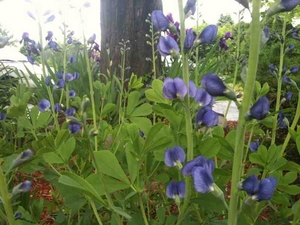Spring is now advancing into early summer and the June gardening tips are more fun than work. Unless you plan on creating a new garden, June’s gardening tips will give way to maintaining your garden which is usually less work.
Gardening Tip #1
Now that the weather is warmer and the garden is beginning to get functional again, the first gardening tip that you need to do is check your drip system or whatever type of watering system you have. Check the lines for splits or cracks that may have occurred during the winter and replace them. Turn the system on and check for water blockages from debri. See if you can rinse the debri out and get the water flowing again. If you can’t, replace that part so that your garden gets proper water coverage.
Gardening Tip #2
Depending on where you live in the United States, this gardening tip may have been completed. If you have any plants that have not been hardened for outdoor planting, that needs to be done now. Place plants outside in their pots whenever it’s above 50˚ F and not too windy. A location that gets some sun and some shade is perfect until they’ve been out doors for a few days, then full sun will be needed for those plants that require full sun.
As the nights get warmer, leave your plants out 24 hours a day to continue the hardening process. Make sure the overnight temperatures will not dip below 50˚ F. If you’re uncertain, bring the plants in to be on the safe side.
Gardening Tip #3
After a couple of weeks of the hardening process, your plants will be ready for outdoor planting. Plant them in the morning so that they can acclimate a bit before the cooler night time temperatures and give your plant lots of water after transplanting it. Transplanting plants from a container to the ground is a traumatic experience for them and they’ll need water daily for about a week, then you can water them every other day unless it’s very hot.
Gardening Tip #4
Outdoor hanging baskets and container pots will also need to be hardened and once that’s completed, these plants can also be moved into their summer location on the deck or wherever you’d like them to be. Remember that container pots and hanging baskets need to be watered daily and fed once a month to maintain their growth and blooms. On really hot summer days, check your container pots and hanging baskets twice a day as they may need to be watered twice.
Gardening Tip #5
Here’s a fun gardenting tip: If you haven’t planted all your container pots, now’s the time to do it. Container pots are great for small spaces and the real advantage is that you can move the pot whenever you want to a location that has more light or to a spot that needs a decoration. There are many vegetables that do exceptionally well in a container pot such as tomatoes, peppers, eggplant, peas, and beans. Container pots are a great way to get children involved in growing their own flower or vegetable and bringing their ‘fruits of labor’ to the kitchen table.
Gardening Tip #6
As your plants bloom, remove spent flowers and check flowers once or twice a week for deadheading (deadheading means to remove dying blooms from the plant so that others may grow). This gardening tip is vital to the blooming and health of a flowering plant. Deadheading is an important process that allows new blooms to develop and maintains the health of the plant. Deadheading will expand the blooming season for your plant and keep it healthy looking if done properly.
Gardening Tip #7
This is the dreaded gardening tip where you need to watch for pests and treat any plant immediately that shows signs of a bug infestation. A simple organic solution of one teaspoon of liquid bubble bath to a quart of water will usually do the trick. Spray the plant in question and the insect will have adverse effects, however, the liquid bubble bath will not harm the plant. Do not use dish detergent as that is a much harsher soap and may damage the plant. Spray the infected plant once a day for a few days and the pests should get the hint. If they don’t you may have to try a harsher chemical and your local nursery or hardware store can help you with that.
Gardening Tip #8
Check for weeds and remove any as you find them. Removing weeds promptly is the best way to get rid of them. Try to get the roots by removing the mulch away from the weed and then digging or pulling the weed out. If the ground is very dry you may want to water the weed first to make it easier to pull it out.
Gardening Tip #9
Check your mulch levels and make sure there’s mulch around the base of the plant. Mulch helps the soil and plant retain moisture during the hot summer months, and mulch also helps to cut down on weeds. Make sure you have at least 2 inches of mulch around the plant.
Happy Gardenin!
Source: Personal Experience





